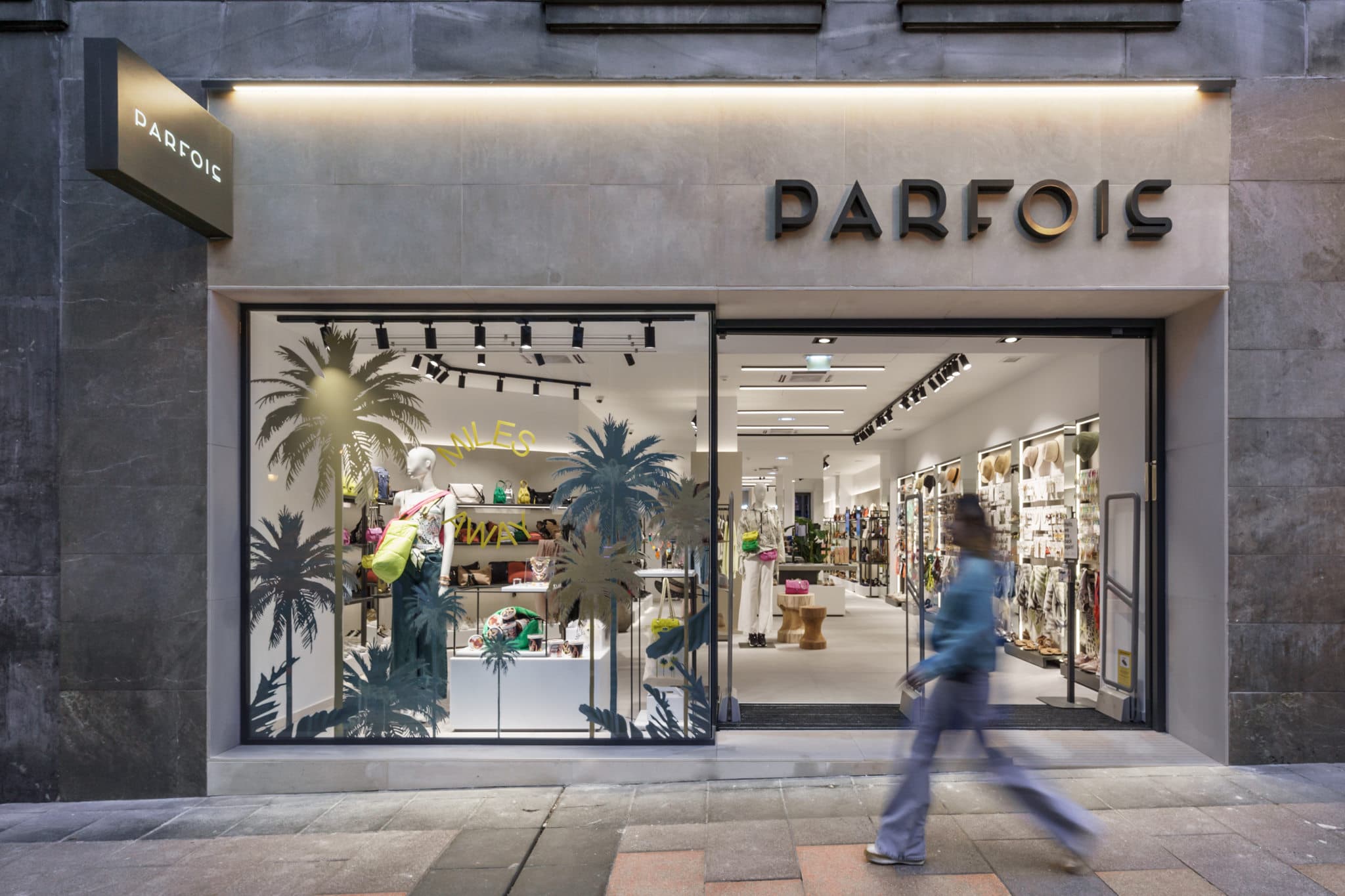
Sanjo, the first Portuguese sneaker brand, is making a bold return to the spotlight. Whether you're a sneaker enthusiast or simply curious to discover a symbol of Portuguese heritage, this article dives into the fascinating story of Sanjo. From its iconic models to its revival, you’ll quickly see why this sneaker is winning over a whole new generation.
An Authentic Portuguese Story
Sanjo’s story begins in 1933 in the charming town of São João da Madeira, in northern Portugal (Aveiro district). At the time, and still today, the town was famous for its hat-making industry. Fun fact: one of the local factories, Fepsa, even made the hat worn by Harrison Ford in Indiana Jones (yes, really!).
The Companhia Industrial de Chapelaria, struggling with declining hat production, decided to diversify and moved into shoe manufacturing. That’s how Sanjo was born, a brand designed to create sturdy, affordable sneakers built to last.
The name “Sanjo” pays tribute to the town and its local football club, Associação Desportiva Sanjoanense (ADS). From its early days, the brand won over young people and athletes across Portugal thanks to the legendary durability of its vulcanised rubber soles and tough canvas uppers. In the 1940s and 1950s, Sanjo was everywhere…students, workers, athletes, everyone wore Sanjo. The sneaker became a true symbol of popular culture.
The Golden Age and International Competition
In the 1960s and 1970s, Sanjo enjoyed its golden age. The brand even supplied sports teams and earned the trust of Portuguese families. Durable, comfortable, affordable, Sanjo sneakers were practically a national uniform. But after the Carnation Revolution on 25 April 1974, everything changed. Portugal’s market opened up to international giants like Nike, Adidas and Reebok, who arrived with innovative designs and aggressive marketing. Sanjo tried to modernise and diversify, but the competition was fierce. In 1996, the Companhia Industrial de Chapelaria closed its doors. Sanjo’s production stopped, leaving behind a rich but dormant legacy.
Sanjo’s Revival, A Return to Its Roots
In 1997, during a court-ordered liquidation, the brand was bought with a clear goal: to revive the legend. For years, the team worked to recover original archives and designs to recreate the authentic spirit of Sanjo. In 2010, the K100 and K200 models marked the brand’s big comeback. But due to a lack of local expertise in vulcanised sole production, manufacturing was outsourced to China. The relaunch had moderate success, nostalgia appealed to some customers, but competition remained tough.
In 2019, Sanjo entered a new era. Acquired by the Braga-based group M2BEWEAR, the brand decided to fully embrace its roots. Production was brought back to Portugal, sustainable materials were prioritised, and the brand adopted a younger, fresher tone. Sanjo rediscovered its DNA and began attracting both nostalgic fans and a new generation. Today, Sanjo sneakers are made in Felgueiras (in the north of the country), with glued rubber soles and a strong focus on durability, all while staying true to the classic designs that made them famous.

Sanjo’s Iconic Models
Among the standout models, some have truly stood the test of time.
K100 : the original high-top with a rubber sole. Perfect for a bold vintage look.
K200 : a low-top version, more relaxed and easy to wear daily.
K330 and K230 : modern takes with colourful accents aimed at younger audiences.
V100 and V200 : updated versions that blend comfort, minimalism and contemporary style.
And because we love the little details that make a difference, these models come in a wide range of colours and materials, combining style, comfort and heritage.
Why Sanjo Is Winning Hearts Today
Sanjo’s comeback is driven by several key factors.
First, its authenticity. Sanjo sneakers carry a strong Portuguese legacy, known for quality and durability (you’ll need to walk miles before wearing out those soles !). Buying a pair of Sanjo means stepping into a story (the story of Portugal) and literally walking with a piece of its past.
Then there’s the style. Sanjo models have a magical ability to transcend trends. They appeal to vintage lovers and young people looking for something unique. The brand has adapted to modern tastes without ever losing its identity, and that’s rare.
Finally, its eco-conscious commitment. Sanjo favours sustainable materials and local production, reducing its environmental footprint. That’s a powerful message in an age when consumers want to buy better, not more.
Where to Buy Sanjo Sneakers ?
Today, getting your hands on a pair of Sanjo sneakers couldn’t be easier. On the official website sanjo.pt, you can browse and buy the full collection. There’s also a physical shop in Lisbon’s Bairro Alto, offering an immersive experience into the Sanjo universe.
And for fans abroad ? The sneakers are available on platforms like Amazon or through vintage sneaker specialists, perfect for collectors and nostalgic buyers.
A Timeless Symbol
Beyond the shoes, Sanjo represents a slice of Portugal’s industrial and cultural history. It recalls a time when craftsmanship, know-how and authenticity were part of everyday life. Today, the brand bridges generations, those who grew up with Sanjo and those discovering it for the first time. Sanjo regularly hosts events, artistic collaborations and limited editions, strengthening its presence in the lifestyle and fashion world. These initiatives show one thing: Sanjo isn’t just a brand, it’s a community.
Collaborations and Limited Editions
To win over new audiences, Sanjo has embraced collaborations with Portuguese designers, artists and streetwear labels. These limited editions highlight Portuguese creativity and bring a fresh twist to classic models. The result ? Exclusive, original and seriously desirable pairs.
Sanjo : A Classic That Stands the Test of Time
Sanjo isn’t just a sneaker brand. It’s a symbol of Portugal, a story of resilience and craftsmanship. Its timeless models continue to win hearts, staying true to the brand’s origins while embracing modernity. Whether you’re a sneaker addict, a passionate collector or simply curious, Sanjo opens the door to a unique world,one of joyful nostalgia, bold style and lasting comfort.
And let’s be honest… slipping on a pair of Sanjo feels a bit like walking through history. (And yes, of course I own a pair !)
Share this article
Suggested articles

Parfois: the accessories brand winning over all of Europe
Few Portuguese brands have achieved such widespread success. Founded in 1994 in Porto by Manuela Medeiros, Parfois began with a simple yet powerful idea: to offer stylish, trendy and affordable fashion accessories for women. Today, the brand operates in over 70 countries, with hundreds of stores across Europe, Africa and the Middle East.

Ecolã, Portugal’s Oldest Wool Blanket Factory
Tucked away in the heart of the Serra da Estrela (more precisely, in Manteigas) Ecolã stands as a living symbol of Portugal’s rich textile heritage. Since its founding in 1925, this family-run company has beautifully combined tradition, ancestral craftsmanship and innovation, becoming the undisputed reference in burel production in Portugal.

Lanidor, An Iconic Brand in Women’s Fashion
In the landscape of Portuguese fashion, few names are as familiar as Lanidor. Born in the 1960s, the brand has become a true reference in women’s ready-to-wear: a clever blend of national craftsmanship, commercial flair, and international ambition. Here, it’s not just about selling clothes, it’s about telling a story ! A story of family, local production, retail innovation… and a certain idea of Portuguese chic. Let’s take you behind the scenes of a brand that has been dressing women for over half a century, with style, consistency, and a touch of saudade.

Amorim, Global Leader in Cork, From Wine Stoppers to Design
In the world of sustainable luxury, few brands manage to combine tradition, innovation, and environmental respect as elegantly as Corticeira Amorim! Founded in 1870 in Vila Nova de Gaia (just a few kilometers from Porto), this Portuguese family business is now the global leader in cork processing ; a noble, natural, and 100% recyclable material.

Vista Alegre, the Portuguese porcelain with worldwide prestige
Vista Alegre… The name might sound like that of a fancy dinner set sitting proudly in a high-end sideboard, but behind those elegant plates lies a true Portuguese saga ! A story made of clay, industrial genius, espresso coffee and let’s be honest, a little bit of national pride (yes, I see you, tableware lovers).

José Maria da Fonseca, 200 Years of Winemaking History
This morning, I opened a bottle… (don’t worry, it wasn’t my first instinct of the day) and no, it wasn’t a rosé for a night out with friends, but a wine carrying a whole legacy, one I was taking to my parents’ for lunch. Here’s the story of a winery celebrating two hundred years without losing a single drop of genius… and with a good dose of joy in the glass!


